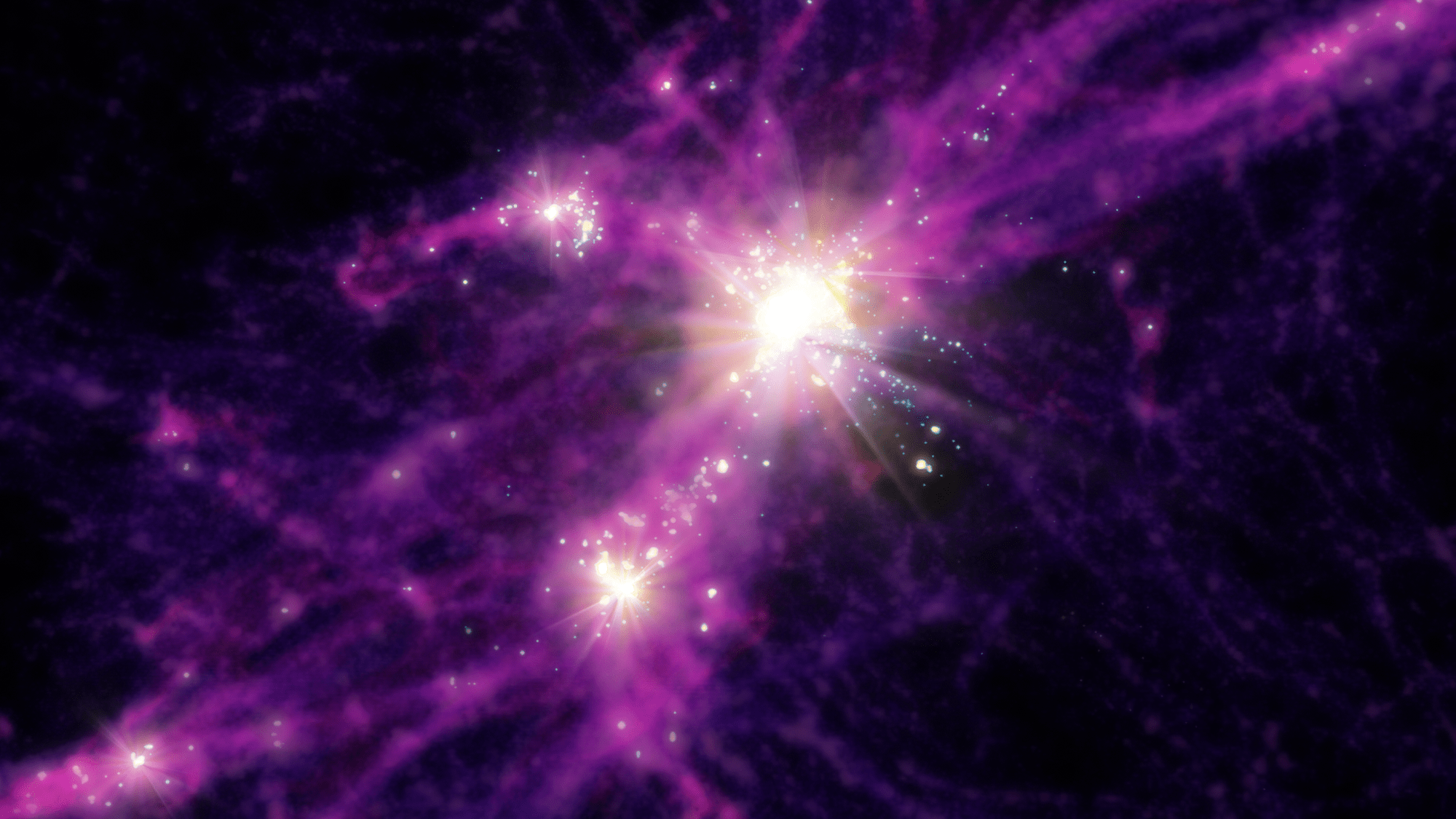

In space, the brightness of a galaxy is typically determined by its mass. However, some new research suggests that less massive galaxies can actually glow just as brightly as larger ones. Due to irregular and brilliant bursts of star formation, some younger galaxies appear deceptively large. The new findings are detailed in a study published October 3 in the Astrophysical Journal Letters.
[Related: Our universe mastered the art of making galaxies while it was still young.]
The first stellar images released by the James Webb Space Telescope (JWST) in 2022 came with a bit of a quandary. To some astronomers, the young galaxies appeared to be too bright, too massive, and too mature to have formed so soon after the big bang, almost as if an infant grew into an adult after only a few years.
“The discovery of these galaxies was a big surprise because they were substantially brighter than anticipated,” study co- author and Northwestern University astrophysicist Claude-André Faucher-Giguère said in a statement. “Typically, a galaxy is bright because it’s big. But because these galaxies formed at cosmic dawn, not enough time has passed since the big bang. How could these massive galaxies assemble so quickly? Our simulations show that galaxies have no problem forming this brightness by cosmic dawn.”
The period in cosmological history called Cosmic Dawn lasted from about 100 million years to 1 billion years after the big bang and is marked by the formation of the first stars and galaxies in the universe.
“The JWST brought us a lot of knowledge about cosmic dawn,” study co-author and Northwestern University astrophysicist Guochao Sun said in a statement. “Prior to JWST, most of our knowledge about the early universe was speculation based on data from very few sources. With the huge increase in observing power, we can see physical details about the galaxies and use that solid observational evidence to study the physics to understand what’s happening.”
The team used advanced computer simulations to model how galaxies formed just after the big bang. Part of Northwestern’s Feedback of Relativistic Environments (FIRE) project, the simulations combine astrophysical theory and advanced algorithms to model how galaxies form. These models help researchers see how galaxies grow and change shape all while considering mass, energy, momentum, and chemical elements returned from stars.
“The key is to reproduce a sufficient amount of light in a system within a short amount of time,” Sun said. “That can happen either because the system is really massive or because it has the ability to produce a lot of light quickly. In the latter case, a system doesn’t need to be that massive. If star formation happens in bursts, it will emit flashes of light. That is why we see several very bright galaxies.”
[Related: Your guide to the types of stars, from their dusty births to violent deaths.]
The simulations in the study created galaxies that were just as bright as the ones observed by JWST. They also found that the early galaxies formed at cosmic dawn likely had stars that formed in bursts. This is a concept called bursty star formation, where stars form in an alternating pattern. It begins with the formation of a bunch of stars at once, then millions of years with little to no stars, and then another burst of stars. By comparison, our Milky Way galaxy followed a very different pattern of star formation at a steady rate.
According to Faucher-Giguère, bursty star formation is particularly common in low-mass galaxies. However, the details of why this happens are still the subject of other research. The team on this study believes that it happens when the initial bursts of stars explode as supernovae a few million years later. The gas is kicked out and then falls back inwards to form new stars and drives the cycle again.
When the galaxies get massive enough, they have significantly stronger gravity. So when the supernovae explode, they aren’t strong enough to eject gas from the star system and the gravity binds the galaxy together. The result is a more steady state.
“Most of the light in a galaxy comes from the most massive stars,” Faucher-Giguère said in a statement. “Because more massive stars burn at a higher speed, they are shorter lived. They rapidly use up their fuel in nuclear reactions. So, the brightness of a galaxy is more directly related to how many stars it has formed in the last few million years than the mass of the galaxy as a whole.”
